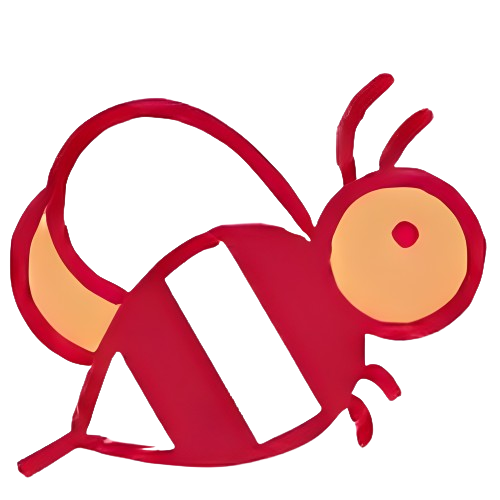


NASA astronauts Sunita Williams and Butch Wilmore have surpassed 500 days in space while serving as the commander and flight engineer of the Expedition 72 crew on the International Space Station. They have been conducting research and experiments, including growing crops and giving haircuts using special tools. Williams also shared her daily routine in space, which includes a citrus fruit salad and Indian food that can be heated up in space.
NASA astronauts Sunita Williams and Butch Wilmore have achieved a significant milestone by surpassing 500 days in space. As the commander and flight engineer of the Expedition 72 crew, they have been residing on the International Space Station (ISS) since June 2021.
During their extended stay aboard the ISS, Williams and Wilmore have played a crucial role in conducting scientific research and experiments. Their work has focused on topics such as:
One of the highlights of their mission was the successful launch and docking of the Boeing Starliner spacecraft. This uncrewed flight test was a major milestone in the development of a reusable commercial spacecraft that could transport astronauts to and from the ISS.
Williams and Wilmore have also shared their experiences and perspectives on life in space through social media and videos. Williams has documented her daily routine, which includes preparing and consuming meals, exercising, and conducting experiments. She has also shared her insights on the challenges and rewards of living in such an extreme environment.
Top 5 FAQs and Answers
Q1: How long have Williams and Wilmore been in space? A1: As of March 2023, they have surpassed 500 days in space.
Q2: What is the purpose of their mission? A2: They are conducting scientific research, testing new technologies, and providing support for the ISS and visiting spacecraft.
Q3: What is the significance of the Boeing Starliner mission? A3: It was a successful test flight of a reusable commercial spacecraft that could potentially transport astronauts to and from the ISS.
Q4: How do Williams and Wilmore adapt to living in space? A4: They follow a daily routine that includes preparing meals, exercising, and conducting experiments. They also use special tools to perform tasks such as growing crops and giving haircuts.
Q5: What are the challenges and rewards of living in space? A5: Challenges include the lack of gravity, isolation from Earth, and exposure to radiation. Rewards include the opportunity to conduct groundbreaking research, witness Earth from a unique perspective, and contribute to the advancement of space exploration.
Background
Sunita Williams is a seasoned astronaut with over 322 days in space prior to this mission. She has participated in several NASA space missions, including the Expedition 14/15 crew on the ISS and a spacewalk to repair the station's solar arrays.
Butch Wilmore has also logged over 178 days in space before joining Expedition 72. He served as a flight engineer on the ISS Expedition 41/42 crew and participated in two spacewalks during that mission.
Williams and Wilmore's extended stay on the ISS is a testament to the advancements made in space exploration and the dedication and resilience of the astronauts who push the boundaries of human endurance and ingenuity. Their contributions will continue to pave the way for future missions to the ISS and beyond.

As winter arrives in India, so does the hazardous air pollution. Delhi NCR's AQI has already crossed the 400 mark, making it crucial to invest in air purifiers, especially after Diwali. Dyson, Qubo, HomePure, and Philips have launched high-quality air purifiers with advanced features to tackle different types of pollutants and create cleaner indoor air. With prices ranging from Rs 5,000 to Rs 1 lakh, these purifiers are a practical and timely purchase for a healthier living.

In a recent family vlog, Indian celebrity couple Shoaib Ibrahim and Dipika Kakar shared their "natural" hair care routine for their son, using a homemade mask made with rice flour, flax seeds, and coconut oil. However, experts warn that what works for adults may not be suitable for babies, whose sensitive skin and scalp could react to the ingredients. While the ingredients may improve hair texture, they do not necessarily promote hair growth. Instead, a healthy diet and good scalp care are more important in maintaining healthy hair.

A recent consumer study has found multiple brands of soft contact lenses in the U.S. to contain "forever chemicals" that can be harmful to both the body and the environment. The study, conducted by the nonprofit organization Environmental Health Sciences, tested 18 varieties of popular contact lenses and found all of them to contain markers for PFAS. Brands such as Acuvue, Alcon, and CooperVision were among the list of affected products. This news serves as a cautionary lesson on the potential risks of overusing contact lenses.

On the birth anniversary of Dr. APJ Abdul Kalam, the ‘Missile Man’ of India, tributes pour in on social media celebrating his life, vision and impact. A visionary scientist, inspiring leader and true patriot, Dr. Kalam's humility, compassion and constant interaction with students continue to inspire generations. His tireless efforts in defense, science and youth empowerment have strengthened India's path towards self-reliance and his legacy continues to motivate young minds to dream big and work hard for the nation.

Recent studies have found that extreme heat, particularly when combined with high humidity, can have a significant impact on mental health. A study in India showed that when wet bulb temperature exceeded 27°C, the probability of reporting severe depression increased by 0.5%, even when the temperature was slightly lower. This finding is consistent with global reviews that have linked high temperatures to mood disorders, increased hospital admissions for psychiatric conditions, and even elevated suicide risk. The Lancet has also published evidence that rising temperatures worldwide are a growing threat to emotional and cognitive health.

In a meeting with university officials in Udaipur, Rajasthan Governor Hari Bhau Bagde stressed the importance of incorporating India's ancient knowledge traditions into academic research. He highlighted the deep repository of knowledge in India since ancient times and urged scholars and scientists to draw upon this tradition in their work. Bagde also suggested making ancient texts available in university libraries for study and research purposes, in order to shape the intellectual abilities and love for the nation among the younger generation.

John Clarke, Michel H. Devoret, and John M. Martinis have been awarded the 2025 Nobel Prize in Physics for their pioneering research into quantum mechanical tunnelling. Their discovery has opened new possibilities for quantum technologies, and will be formally presented on December 10, the anniversary of Alfred Nobel's death. This announcement follows the tradition of recognizing transformative contributions to science, and the award carries a prestigious prize of 11 million Swedish kronor.

The US-Japanese trio of Mary E Brunkow, Fred Ramsdell, and Shimon Sakaguchi have won the 2025 Nobel Prize in physiology or medicine “for their discoveries concerning peripheral immune tolerance". Through their research, they have shown how the immune system is kept in check and why serious autoimmune diseases do not affect everyone. Sakaguchi found a new class of T cells, while Brunkow and Ramsdell discovered the explanation behind a specific mouse strain's vulnerability to autoimmune diseases. Together, they have significantly advanced our understanding of immunology and autoimmune diseases.

Indian astronaut Shubhanshu Shukla, who recently completed a 20-day space mission, shared his insights and experiences at the convocation ceremony of Dr. APJ Abdul Kalam Technical University. He highlighted the importance of patience, focus, and the inevitability of change in achieving success, and urged the graduating class to actively contribute to shaping a fearless and ambitious India.

The Regional Meteorological Centre (RMC) in Chennai has issued a weather alert for parts of Tamil Nadu, with thunderstorms and light to moderate rainfall expected on Saturday. The alert was issued due to the strengthening of a cyclonic circulation in the Bay of Bengal, which is likely to intensify and form a low-pressure area. The system is expected to affect Tamil Nadu, Puducherry, and Karaikal, with some areas experiencing heavy rainfall and gusty winds. The public is advised to stay updated and take precautions, especially in hilly and western districts.